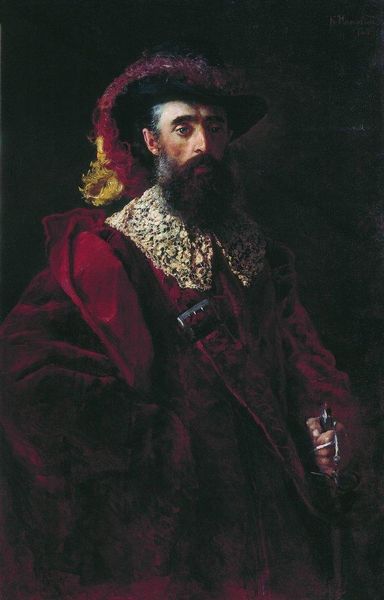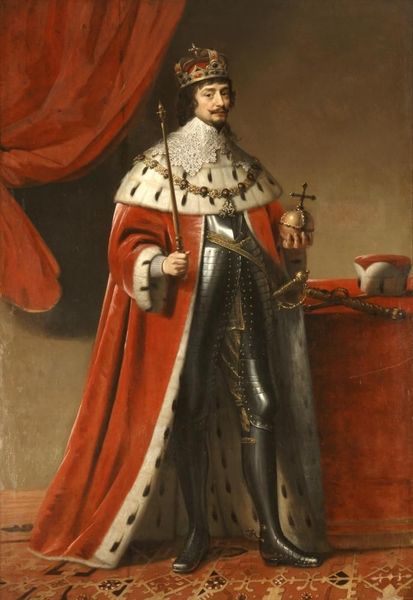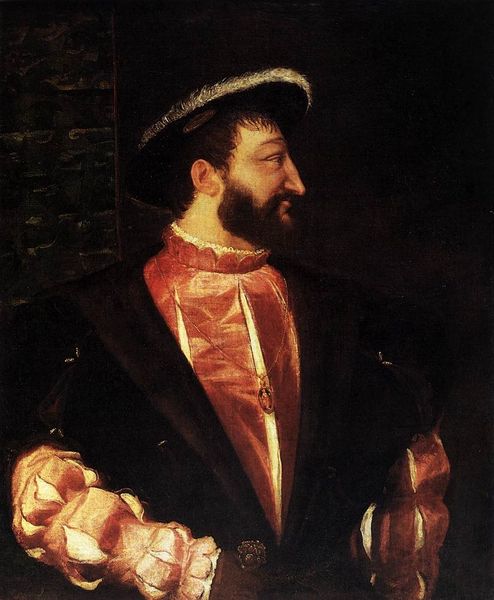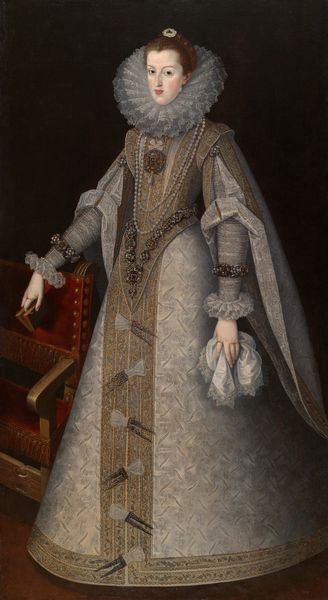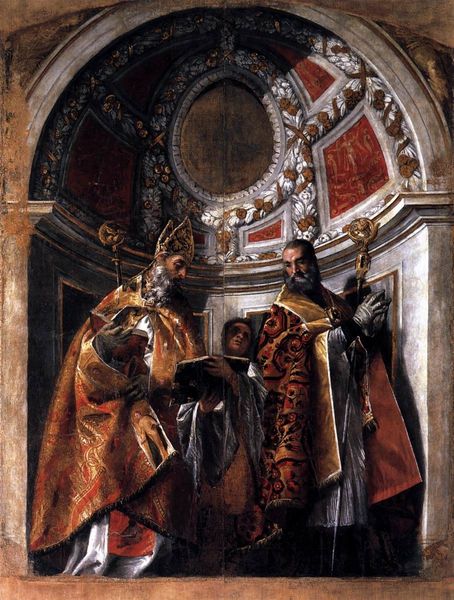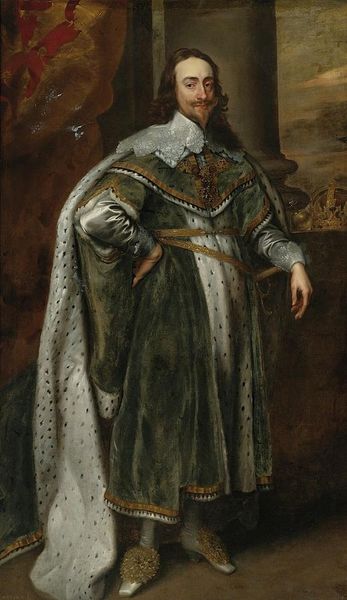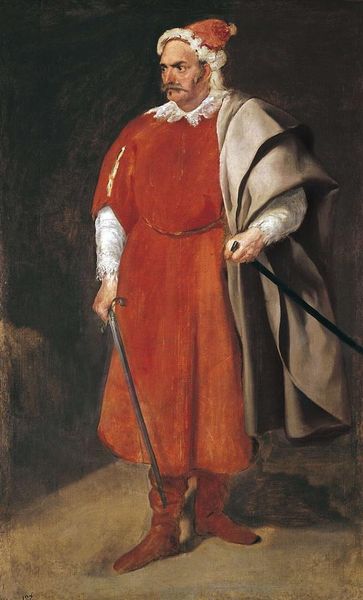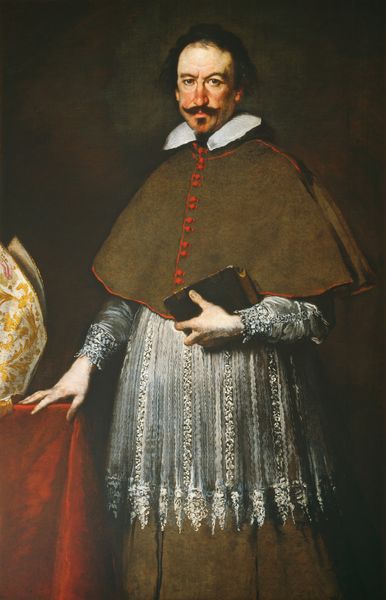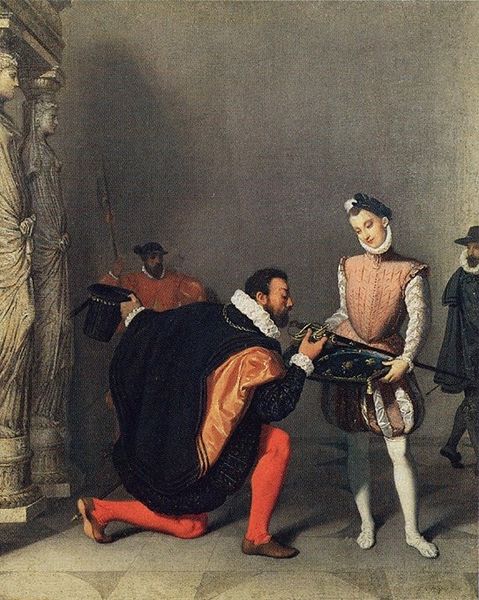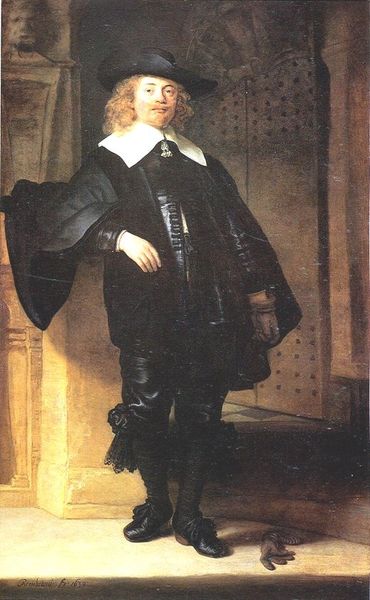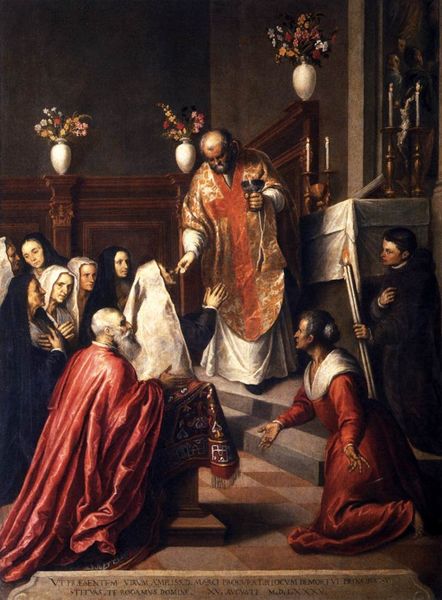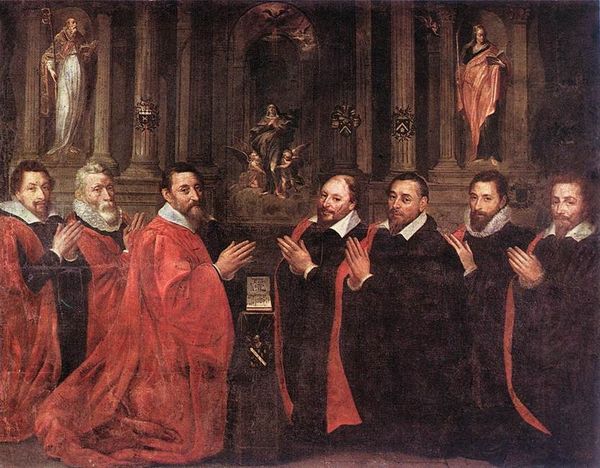
Julian Romero de las Azanas and his patron St. Julian 1590
0:00
0:00
elgrecodomenikostheotokopoulos
Museo del Prado, Madrid, Spain
#
portrait
#
mannerism
#
male-portraits
#
costume
#
group-portraits
#
costume
#
history-painting
#
italian-renaissance
Dimensions: 207 x 128 cm
Copyright: Public domain
Curator: Ah, here we have "Julian Romero de las Azanas and his patron St. Julian," painted in 1590 by El Greco. A striking piece residing here at the Museo del Prado. Editor: Whoa, it's... intense! The dark, almost shadowy figure looming behind the luminous one in the front... it’s got this strangely dramatic, theatrical vibe, doesn’t it? Like a spotlight is hitting the main character on stage. Curator: Indeed. We can certainly interpret it as theatrical, noting El Greco's mastery of Mannerism. Think about the social and religious dynamics in late 16th century Spain. El Greco creates a composite portrait designed to visually assert Julian Romero’s lineage and his moral character. Saint Julian acts here as both advocate and guarantor. Editor: The ruffled collars! They're practically beacons. Are those real ruffs or spectral haloes? There is a real contrast between the crisp, clean white of Julian Romero and his bulky armor, with only their faces hinting at warmth, but surrounded by what feels like an engulfing darkness. Curator: Precisely. Consider this as a very precise staging, the severe dark attire signaling nobility and military service and that enormous white cloak emphasizing purity and piety. In representing this specific saint as a patron figure, El Greco also speaks to broader themes of atonement and redemption, both powerfully relevant concepts within the sociopolitical landscape of that era. Editor: Hmm, so you're saying that El Greco created more than a mere snapshot; that it is something like a performative tableau about power and piety. And the darkness, it almost seems to anticipate film noir! Curator: It speaks to a conscious visual language reflecting specific period anxieties. The exaggerated forms and heightened emotionalism common in Mannerism offered artists a tool to mirror and dissect those cultural anxieties, engaging directly with power and the church’s place in civic life. Editor: I get it. It’s less about straightforward representation and more about this artist amplifying tensions and playing with archetypes of its age. Well, now I'm seeing all kinds of shadows and symbolic posturing…it feels heavy, historical, but somehow also very… alive. Curator: Precisely! And it's within that dynamic, the push and pull of intention and interpretation, where we really start to grasp El Greco's continued resonance. Editor: I will leave feeling enriched by art once again.
Comments
No comments
Be the first to comment and join the conversation on the ultimate creative platform.
